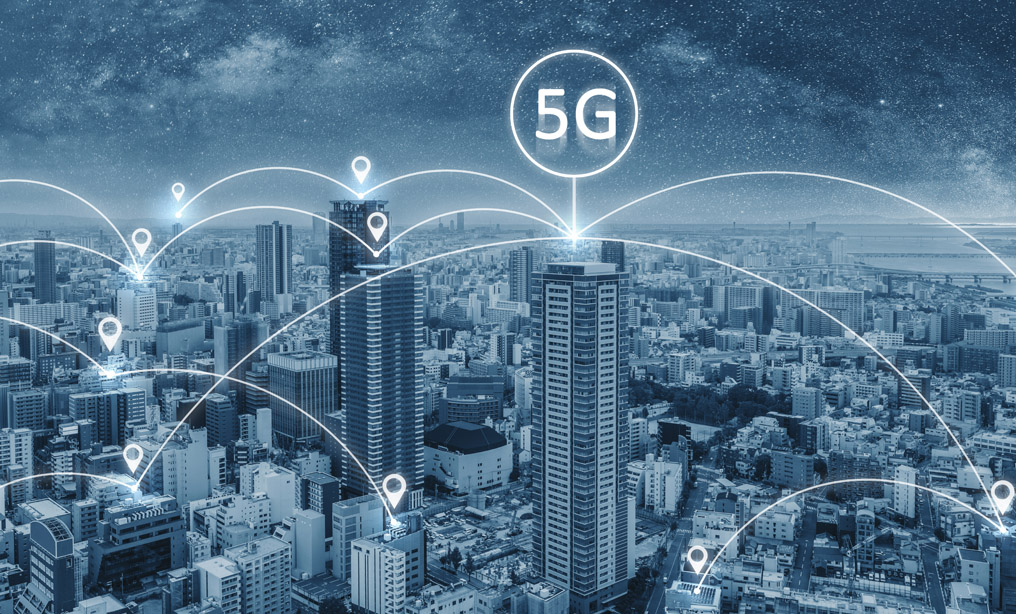The Internet of Things: Application of Current FRAND Methodologies in Developing Markets
This article explores ways parties can utilize two conventional SEP valuation methodologies to address problems related to 5G licensing for IoT products.
March 19, 2021 at 02:20 PM
8 minute read
 The Internet of Things (IoT) is an ever-expanding web of diverse, interconnected devices ranging from simple consumer appliances to complex industrial systems. 5G technology promises to accelerate IoT deployment by providing accessible high-speed, high-capacity communication networks. This deployment, however, will undoubtedly lead to disputes over standard-essential patents (SEPs) covering the 5G Standard. These disputes are likely to involve parties from industries that have not previously competed against one another. The potential for friction will be especially high because industries often have diverse, individualized practices for valuation and licensing. Fairly resolving 5G IoT SEP disputes—for patent owners and licensees alike—will require creative approaches.
The Internet of Things (IoT) is an ever-expanding web of diverse, interconnected devices ranging from simple consumer appliances to complex industrial systems. 5G technology promises to accelerate IoT deployment by providing accessible high-speed, high-capacity communication networks. This deployment, however, will undoubtedly lead to disputes over standard-essential patents (SEPs) covering the 5G Standard. These disputes are likely to involve parties from industries that have not previously competed against one another. The potential for friction will be especially high because industries often have diverse, individualized practices for valuation and licensing. Fairly resolving 5G IoT SEP disputes—for patent owners and licensees alike—will require creative approaches.
This article will explore ways parties can utilize two conventional SEP valuation methodologies to address problems related to 5G licensing for IoT products. These methodologies, generally used in fair, reasonable, and non-discriminatory (FRAND) disputes, are commonly known as the "bottom-up" and "top-down" approaches. In applying these methodologies to 5G and IoT, an exemplary case study will help illustrate particular problems that might emerge and explore how parties might consider approaching these inevitable SEP disputes.
The Problem
The Broad Diversity of 5G IoT Devices Makes Finding Common Ground More Difficult. The diversity in IoT products adopting and using 5G technology will likely complicate patent licensing. IoT products will use 5G technology in substantially different ways. Valuation difficulties based on these divergent use cases may impede 5G deployment. In particular, high royalties may pose a risk to profitability and discourage adaption of 5G technology while low valuations can disincentive further technological development. Placing a proper (and fair) value on 5G SEPs will be critical to realizing value in R&D efforts while continuing to encourage widespread adoption in IoT.
This content has been archived. It is available through our partners, LexisNexis® and Bloomberg Law.
To view this content, please continue to their sites.
Not a Lexis Subscriber?
Subscribe Now
Not a Bloomberg Law Subscriber?
Subscribe Now
NOT FOR REPRINT
© 2025 ALM Global, LLC, All Rights Reserved. Request academic re-use from www.copyright.com. All other uses, submit a request to [email protected]. For more information visit Asset & Logo Licensing.
You Might Like
View All
Bankruptcy Judge Clears Path for Recovery in High-Profile Crypto Failure
3 minute read

Silk Road Founder Ross Ulbricht Has New York Sentence Pardoned by Trump
3 minute read
Walt Disney, IBM Denied High Court Review of Old NY Franchise Tax Law
3 minute readLaw Firms Mentioned
Trending Stories
- 1Some Thoughts on What It Takes to Connect With Millennial Jurors
- 2Artificial Wisdom or Automated Folly? Practical Considerations for Arbitration Practitioners to Address the AI Conundrum
- 3The New Global M&A Kings All Have Something in Common
- 4Big Law Aims to Make DEI Less Divisive in Trump's Second Term
- 5Public Notices/Calendars
Who Got The Work
J. Brugh Lower of Gibbons has entered an appearance for industrial equipment supplier Devco Corporation in a pending trademark infringement lawsuit. The suit, accusing the defendant of selling knock-off Graco products, was filed Dec. 18 in New Jersey District Court by Rivkin Radler on behalf of Graco Inc. and Graco Minnesota. The case, assigned to U.S. District Judge Zahid N. Quraishi, is 3:24-cv-11294, Graco Inc. et al v. Devco Corporation.
Who Got The Work
Rebecca Maller-Stein and Kent A. Yalowitz of Arnold & Porter Kaye Scholer have entered their appearances for Hanaco Venture Capital and its executives, Lior Prosor and David Frankel, in a pending securities lawsuit. The action, filed on Dec. 24 in New York Southern District Court by Zell, Aron & Co. on behalf of Goldeneye Advisors, accuses the defendants of negligently and fraudulently managing the plaintiff's $1 million investment. The case, assigned to U.S. District Judge Vernon S. Broderick, is 1:24-cv-09918, Goldeneye Advisors, LLC v. Hanaco Venture Capital, Ltd. et al.
Who Got The Work
Attorneys from A&O Shearman has stepped in as defense counsel for Toronto-Dominion Bank and other defendants in a pending securities class action. The suit, filed Dec. 11 in New York Southern District Court by Bleichmar Fonti & Auld, accuses the defendants of concealing the bank's 'pervasive' deficiencies in regards to its compliance with the Bank Secrecy Act and the quality of its anti-money laundering controls. The case, assigned to U.S. District Judge Arun Subramanian, is 1:24-cv-09445, Gonzalez v. The Toronto-Dominion Bank et al.
Who Got The Work
Crown Castle International, a Pennsylvania company providing shared communications infrastructure, has turned to Luke D. Wolf of Gordon Rees Scully Mansukhani to fend off a pending breach-of-contract lawsuit. The court action, filed Nov. 25 in Michigan Eastern District Court by Hooper Hathaway PC on behalf of The Town Residences LLC, accuses Crown Castle of failing to transfer approximately $30,000 in utility payments from T-Mobile in breach of a roof-top lease and assignment agreement. The case, assigned to U.S. District Judge Susan K. Declercq, is 2:24-cv-13131, The Town Residences LLC v. T-Mobile US, Inc. et al.
Who Got The Work
Wilfred P. Coronato and Daniel M. Schwartz of McCarter & English have stepped in as defense counsel to Electrolux Home Products Inc. in a pending product liability lawsuit. The court action, filed Nov. 26 in New York Eastern District Court by Poulos Lopiccolo PC and Nagel Rice LLP on behalf of David Stern, alleges that the defendant's refrigerators’ drawers and shelving repeatedly break and fall apart within months after purchase. The case, assigned to U.S. District Judge Joan M. Azrack, is 2:24-cv-08204, Stern v. Electrolux Home Products, Inc.
Featured Firms
Law Offices of Gary Martin Hays & Associates, P.C.
(470) 294-1674
Law Offices of Mark E. Salomone
(857) 444-6468
Smith & Hassler
(713) 739-1250






